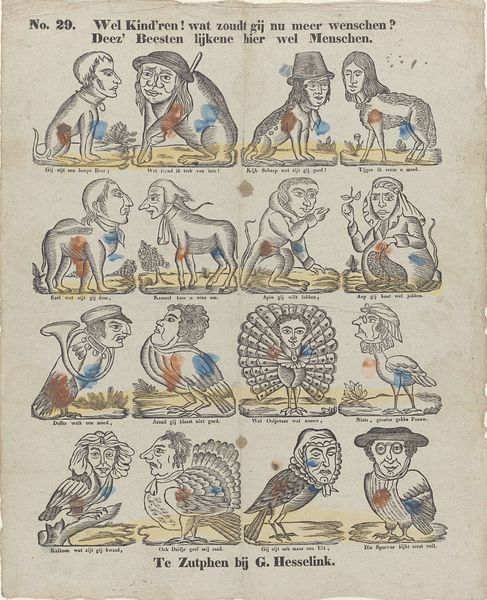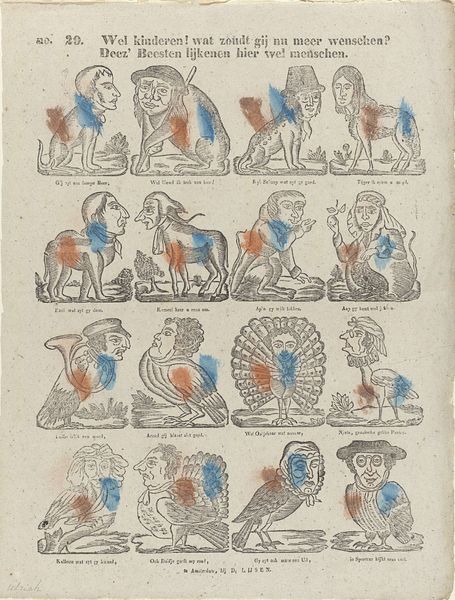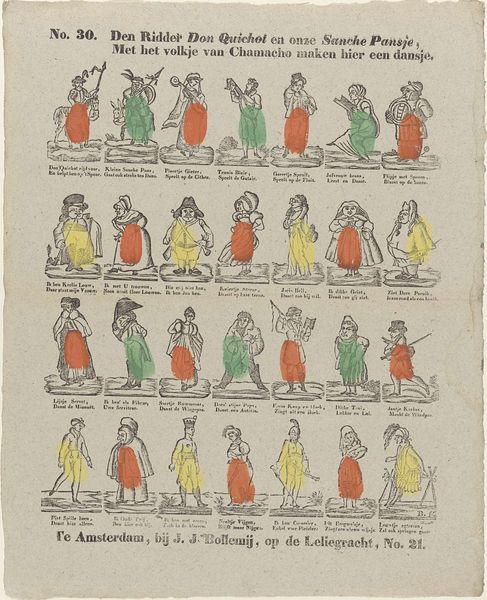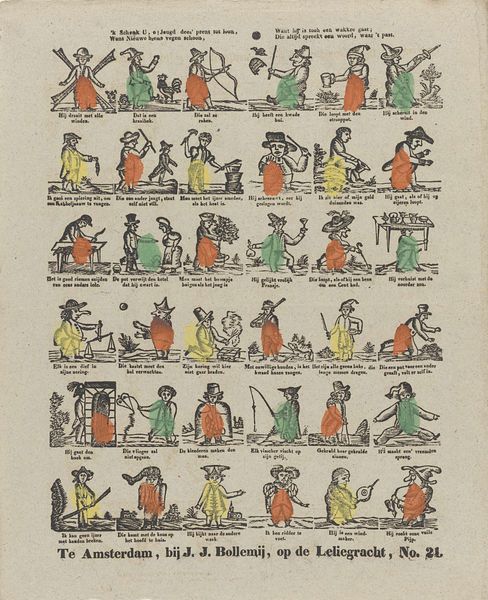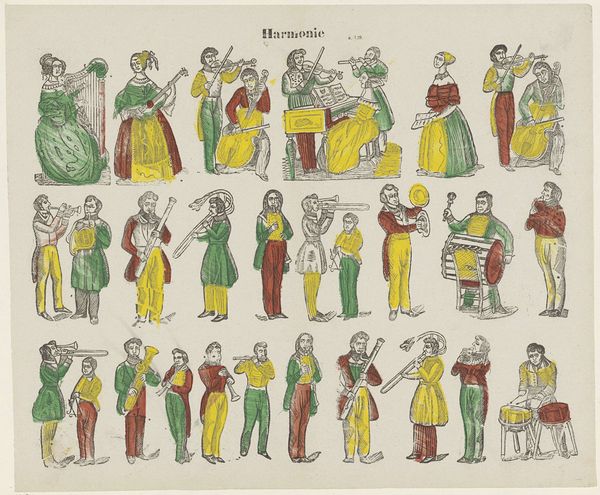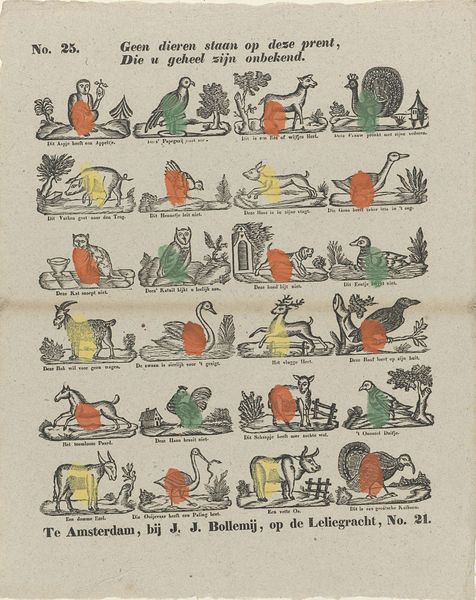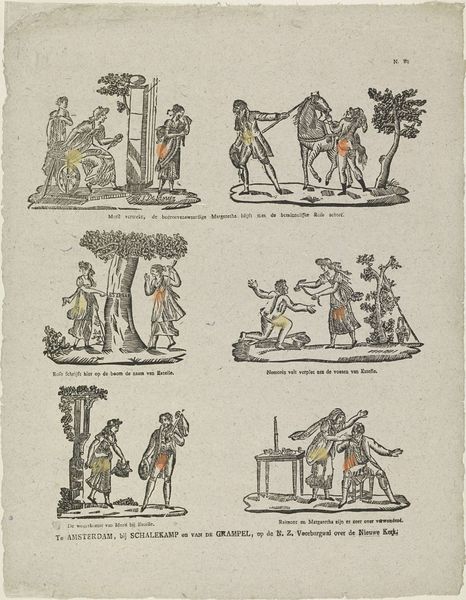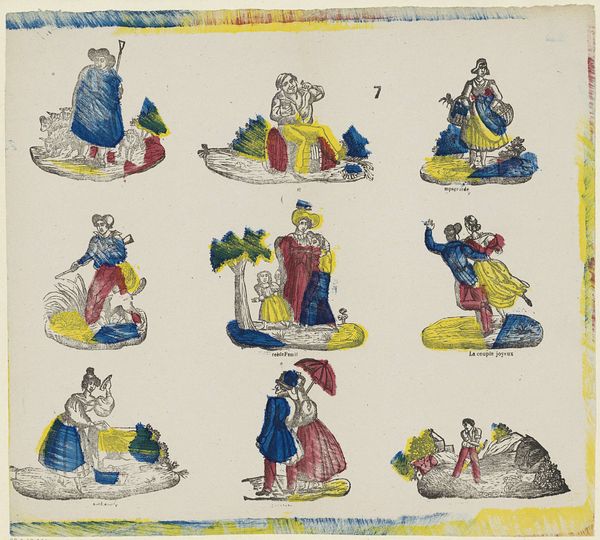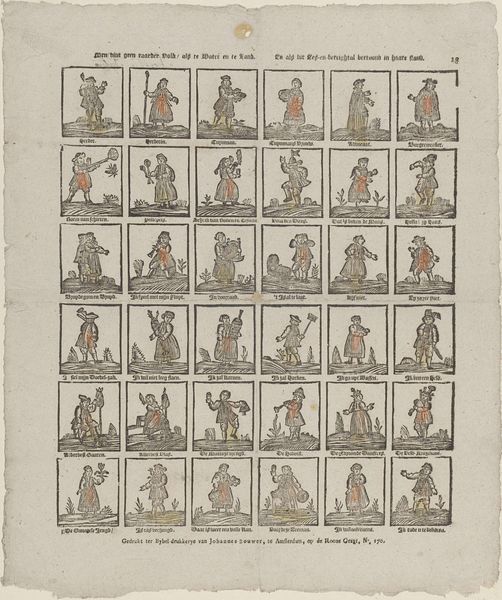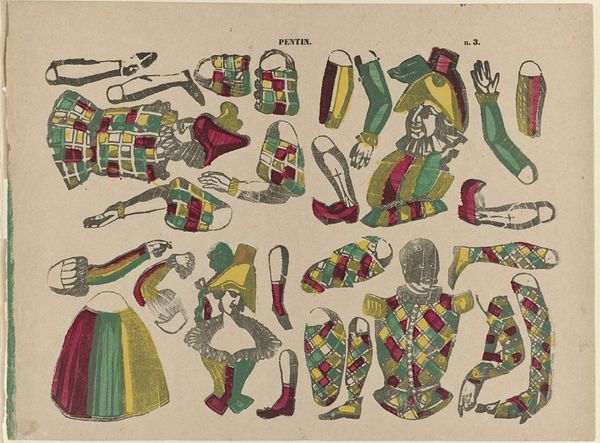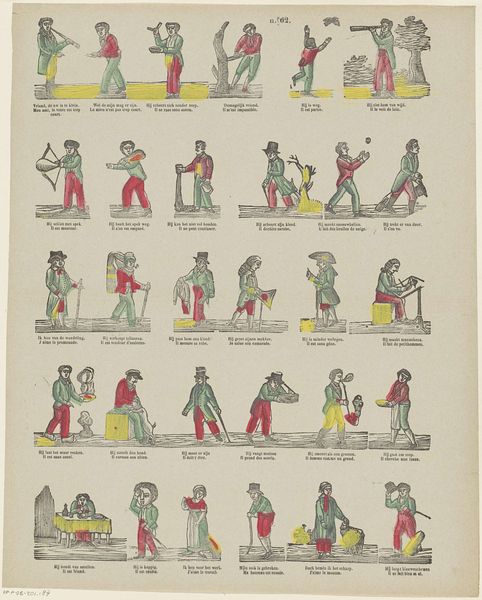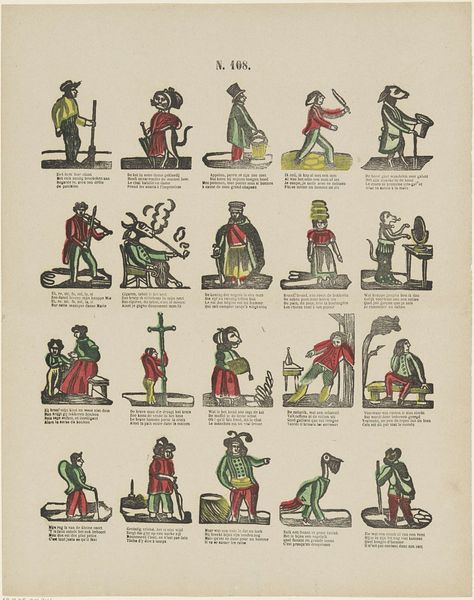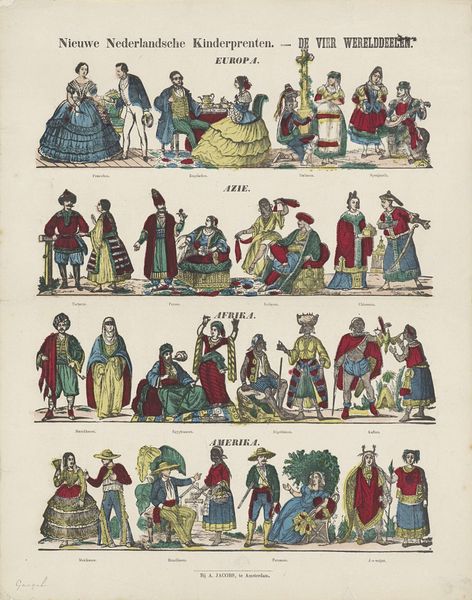
Wel kinderen! wat zoudt gij nu meer wenschen? / Deez' beesten lijkenen hier wel menschen 1816 - 1849
0:00
0:00
drawing, print, pen, engraving
#
drawing
#
comic strip sketch
#
narrative-art
#
dutch-golden-age
# print
#
caricature
#
old engraving style
#
sketch book
#
personal sketchbook
#
sketchwork
#
ink drawing experimentation
#
comic
#
pen work
#
sketchbook drawing
#
pen
#
genre-painting
#
storyboard and sketchbook work
#
sketchbook art
#
engraving
Dimensions: height 424 mm, width 340 mm
Copyright: Rijks Museum: Open Domain
Curator: This engraving, “Wel kinderen! wat zoudt gij nu meer wenschen? / Deez' beesten lijkenen hier wel menschen,” was created by J.J. Bollemij sometime between 1816 and 1849. The piece shows a series of animal-human hybrids. What strikes you about it? Editor: It feels… unsettling. The way these creatures, these animals with human faces, are presented almost like a children’s primer, but the text above them, the suggestion that "beasts look like humans," is just creepy. How do you interpret this work? Curator: Well, let’s think about the social context. The period saw a rise in scientific racism and the burgeoning field of phrenology. Could this be a commentary on those pseudo-scientific ideas? Perhaps the artist is satirizing the ways humans categorize and dehumanize others by emphasizing the supposed animalistic qualities? What does it mean to look at this today, knowing what we know about the history of those ideas? Editor: So, it's not just a funny animal picture, but something much darker. The animal/human comparison seems less like a harmless joke and more like an accusation – drawing on the fear and othering of the time. The caption, “What more could you want? These beasts look like humans!”, really underlines that tension now. Curator: Exactly. It invites us to reflect on the history of how marginalized groups have been portrayed and the lasting effects of such representations. Editor: I never would have considered that just from looking at it! Thank you, seeing this work within its historical and social context really shed new light on it for me. Curator: And it is that very dialogue between past and present, between art and lived experience, that makes art history such a vital field.
Comments
No comments
Be the first to comment and join the conversation on the ultimate creative platform.
